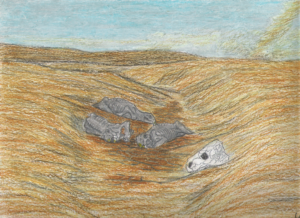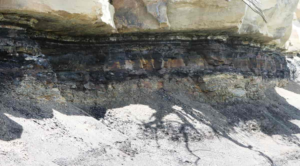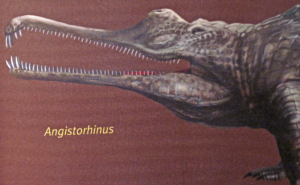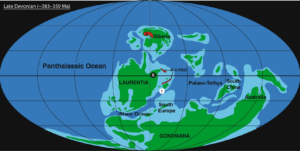The annals of Earth’s records are described with the aid of catastrophic catastrophes that have often transformed the biosphere of the planet, growing principal upheavals in the course of life. These events have come about at some stage in recorded history. The big extermination of species has been a result of these bad extinction events, which encompass foremost volcanic eruptions, strikes from asteroids, and intense adjustments in weather. However, those calamities have been accompanied by instances of superb evolutionary creativity.
The examination of those occurrences no longer simplest gives a glimpse into the resiliency and adaptableness of existence. However, it additionally serves as a jarring reminder of the viable vulnerabilities that exist inside our very own biosphere. As we go similarly into those epic moments of destruction and regeneration, we’re capable of finding the profound forces that have fashioned the style of lifestyles on Earth and retain to have an effect on its destiny.
Permian-Triassic extinction
The Permian-Triassic extinction, also known as the “Great Dying,” was the most severe extinction event in Earth’s history, occurring approximately 252 million years ago. This event marks the boundary between the Permian and Triassic geological periods. It led to the loss of about 96% of all marine species and 70% of terrestrial vertebrate species.

Several factors likely contributed to this mass extinction, including:
- Volcanic Activity: Massive volcanic eruptions in what is now Siberia, known as the Siberian Traps, released vast amounts of lava, ash, and gases, including carbon dioxide and sulfur dioxide. This would have caused severe global warming and acid rain, drastically altering the climate and environment.
- Methane Release: The warming may have triggered the release of methane from methane hydrates on the ocean floor, further amplifying global warming.
- Anoxia: Reduced oxygen levels in the oceans (anoxia) would have created dead zones, killing marine life.
- Ocean Acidification: The increase in atmospheric carbon dioxide likely led to ocean acidification, adversely affecting marine organisms, particularly those with calcium carbonate shells or skeletons.
The recovery from this extinction event was slow, taking millions of years for ecosystems to stabilize and for biodiversity to recover to previous levels. This event significantly reshaped life on Earth, paving the way for the dominance of dinosaurs in the subsequent Mesozoic era.
Cretaceous-Paleogene (K-Pg) extinction
The Cretaceous-Paleogene (K-Pg) extinction event, often colloquially referred to as the “dinosaur extinction,” marks one of the most significant events in Earth’s history. It occurred approximately 66 million years ago and brought an abrupt end to the reign of the dinosaurs and numerous other species. This cataclysmic event reshaped the Earth’s ecosystems, paving the way for the rise of mammals and eventually humans.
The leading theory behind the K-Pg extinction suggests that it was triggered by a combination of factors, with the primary culprit being a massive asteroid impact. This impact, believed to have occurred near the Yucatán Peninsula in Mexico, unleashed a cascade of destruction across the planet. The impact itself would have generated immense heat and shockwaves, causing widespread fires, earthquakes, and tsunamis.
The aftermath of the impact was equally devastating. The colossal amounts of debris ejected into the atmosphere created a global dust cloud, blocking out sunlight for months or even years. This phenomenon, known as “impact winter,” led to a dramatic drop in temperatures and disrupted photosynthesis, decimating plant life and, subsequently, the food chain.

The sudden loss of sunlight and subsequent drop in temperatures would have had dire consequences for many organisms, particularly those dependent on photosynthesis. Plants would have withered away, leading to a collapse of ecosystems and widespread famine among herbivores. The knock-on effects would have been felt throughout the food chain, ultimately leading to the extinction of countless species, including the non-avian dinosaurs.
However, while the asteroid impact is considered the primary trigger of the K-Pg extinction, it likely acted in conjunction with other factors, such as volcanic activity. The Deccan Traps in present-day India, one of the largest volcanic provinces in the world, were active around the time of the extinction event. The release of massive amounts of greenhouse gases and aerosols into the atmosphere from these eruptions may have contributed to the environmental chaos already wrought by the asteroid impact.
Despite the devastation of the K-Pg extinction, it also paved the way for new life to emerge. In the wake of the catastrophe, mammals, which had previously been overshadowed by the dominant dinosaurs, began to diversify and proliferate. Over millions of years, they evolved to fill the ecological niches left vacant by the extinct species, eventually leading to the rise of modern mammalian fauna, including humans.
The study of the K-Pg extinction event not only provides valuable insights into Earth’s history but also underscores the fragility of life on our planet and the profound impact that external events can have on the course of evolution. By understanding the mechanisms and consequences of past extinction events, scientists can better comprehend the potential threats facing life on Earth today and in the future.
Read also: 10 Oldest Artifacts Ever Discovered In The World
The Triassic-Jurassic extinction
The Triassic-Jurassic extinction event, occurring approximately 201.3 million years ago, marked one of the most significant ecological upheavals in Earth’s history. It stands as the second-largest mass extinction event, surpassed only by the Permian-Triassic event, which wiped out nearly 96% of marine species.
During the late Triassic period, the Earth was experiencing considerable geological and climatic changes. One of the key factors leading up to the extinction was the breakup of the supercontinent Pangaea, which initiated massive volcanic eruptions and the formation of the Central Atlantic Magmatic Province (CAMP). These eruptions spewed vast amounts of greenhouse gases into the atmosphere, leading to rapid global warming and ocean acidification.
The environmental changes wrought havoc on ecosystems worldwide. Marine life suffered greatly, with around 22% of marine families and 53% of marine genera going extinct. The extinction hit reef-building organisms particularly hard, causing a collapse in coral reef ecosystems. Terrestrial ecosystems also experienced significant losses, with an estimated 35% of terrestrial vertebrate families disappearing.

Several theories have been proposed to explain the cause of the Triassic-Jurassic extinction. The most widely accepted hypothesis revolves around the role of volcanic activity and its associated effects on climate and ocean chemistry. The massive release of greenhouse gases such as carbon dioxide and methane led to a rapid rise in global temperatures, disrupting ecosystems and causing widespread stress to marine and terrestrial organisms. Additionally, the release of sulfur dioxide and other aerosols likely led to short-term cooling and acid rain, further stressing ecosystems.
The Triassic-Jurassic extinction event profoundly reshaped the Earth’s biota, paving the way for the rise of the dinosaurs as dominant terrestrial organisms during the Jurassic period. It took millions of years for biodiversity to recover fully from the devastation wrought by this event, underscoring the long-term impacts of mass extinctions on the evolution of life on our planet.
The Late Devonian extinction
The Late Devonian extinction, occurring roughly 372 million years ago, stands as one of the “Big Five” mass extinctions in Earth’s history. This catastrophic event profoundly altered the planet’s biodiversity, leading to significant losses among marine and terrestrial species.
Lasting over several million years during the Frasnian-Famennian stages of the Devonian period, this extinction event is primarily associated with marine life decline, although terrestrial organisms were also affected to some extent. The Late Devonian extinction is estimated to have wiped out around 70% of marine species and approximately 20% of all families, making it one of the most severe biodiversity crises in Earth’s history.
Several hypotheses have been proposed to explain the causes of this extinction event. One leading theory suggests that a combination of factors contributed to the decline in marine biodiversity. These factors may have included extensive glaciation, which led to sea level fluctuations and changes in ocean circulation patterns. Additionally, fluctuations in oceanic oxygen levels and nutrient availability could have also played a role, impacting the survival of marine organisms, especially those reliant on specific environmental conditions.

Another proposed cause is the impact of an extraterrestrial object, such as a comet or asteroid, although direct evidence to support this theory is limited. Nevertheless, the possibility of an impact event contributing to the Late Devonian extinction cannot be entirely ruled out, as similar occurrences have been implicated in other mass extinctions throughout Earth’s history.
Furthermore, widespread volcanic activity during this period, particularly the formation of the Viluy Traps in Siberia, may have released large amounts of greenhouse gases into the atmosphere, leading to global warming and ocean acidification. These environmental changes would have put significant stress on marine ecosystems, further exacerbating the extinction crisis.
The Late Devonian extinction profoundly shaped the course of evolution, paving the way for the rise of new species and ecological communities during the subsequent Carboniferous period. It serves as a stark reminder of the Earth’s dynamic nature and the vulnerability of life to environmental changes, highlighting the importance of understanding and mitigating the factors that can lead to mass extinctions.
